Your browser is not supported for this experience.
We recommend using Chrome, Firefox, Edge, or Safari.
Top Birding Spots in Southwest Louisiana
Southwest Louisiana is the most likely location in the state to find western vagrants, and many first-state records of birds like Painted Redstart, Pyrrhuloxia, and Ladder-backed Woodpeckers have been documented here. In spring, radar data has shown that the area near the border of Texas and Louisiana has shown the largest concentration of Neotropical migrant birds passing through the Gulf Coast on their way north. In the right conditions between late March and early May, cheniers and fields can be littered with colorful warblers, grosbeaks, buntings, and vireos. The beaches are home to nesting Least Terns and Wilson’s Plovers, but also provide important stopover habitat for a variety of waterbirds and seabirds. The marshes ring loud with rails, wrens, and sparrows. Here is a list of specific locations!
Southwest Louisiana’s diverse ecosystem of prairies, forested wetlands, marshes, and coastal areas provide perfect habitats for more than 400 different species of birds in and around Lake Charles. Here are the best places to spot them!
1. Peveto Woods Sanctuary
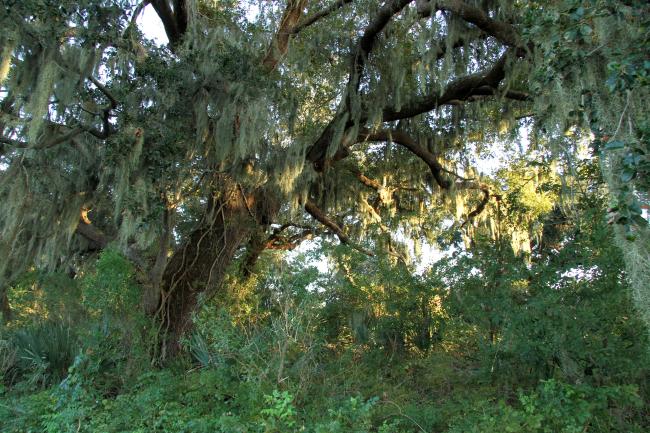
Peveto Woods Sanctuary, run by the Baton Rouge Audubon Society, is a small-but-potent patch of coastal woodland which harbors multitudes of passerine birds during the spring and fall migration periods. Beyond the usual fare of neotropical flycatchers, vireos, thrushes, warblers, tanagers, grosbeaks and orioles from throughout eastern North America, Peveto Woods had also repeatedly hosted numerous species from the western U.S. and Mexico, including Lesser Nighthawk, Groove-billed Ani, Red-faced Warbler, Hermit Warbler, Western Tanager, Hepatic Tanager, Black-headed Grosbeak, Lazuli bunting, and Hooded Oriole.
Thanks to its location in the center of the migratory flight path across the Gulf of Mexico, it’s estimated that as many as two million birds use the Peveto Woods sanctuary each year.
Location:
Peveto Woods: 29.757629°, -93.602785°
What to Expect:
A pavilion with benches and interpretive kiosks is available as is a port-a-potty. Trails run through coastal woodlands and are unpaved. Mosquito spray, as well as long-sleeve shirts and pants, and closed-toed shoes, are recommended.
2. Wetland Walkway on Sabine National Wildlife Refuge

Sabine National Wildlife Refuge’s Wetland Walkway is on the west side of the road approximately 10 miles south of Hackberry, Louisiana. A 1.5-mile accessible path and boardwalk loops out into the marsh! Songbirds use the red mulberry (Morus rubra) and other low trees and shrubs which are interspersed along the way, particularly during spring and fall migration. Of course, waterfowl and wading birds are the main attractions here, along with two non-avian species: American alligators and nutrias (Myocastor coypus, a beaver-like wetland rodent introduced to Louisiana from South America in the early twentieth century). Look up into the skies for Osprey, hawks and falcons, Turkey Vulture, and other raptors. Halfway through the walk, climb up into the accessible two-story observation tower for a panoramic view of the Sabine NWR’s 125,000 watery acres which stretch west all the way to the Sabine River.
Location:
Wetland Walkway, Sabine NWR: 29.872586°, -93.458580°
What to Expect:
Restrooms/washrooms. Mosquito spray, as well as sunscreen, is recommended. Long sleeve shirts and pants may be preferred at dawn and dusk.
3. Blue Goose Trail on Sabine National Wildlife Refuge

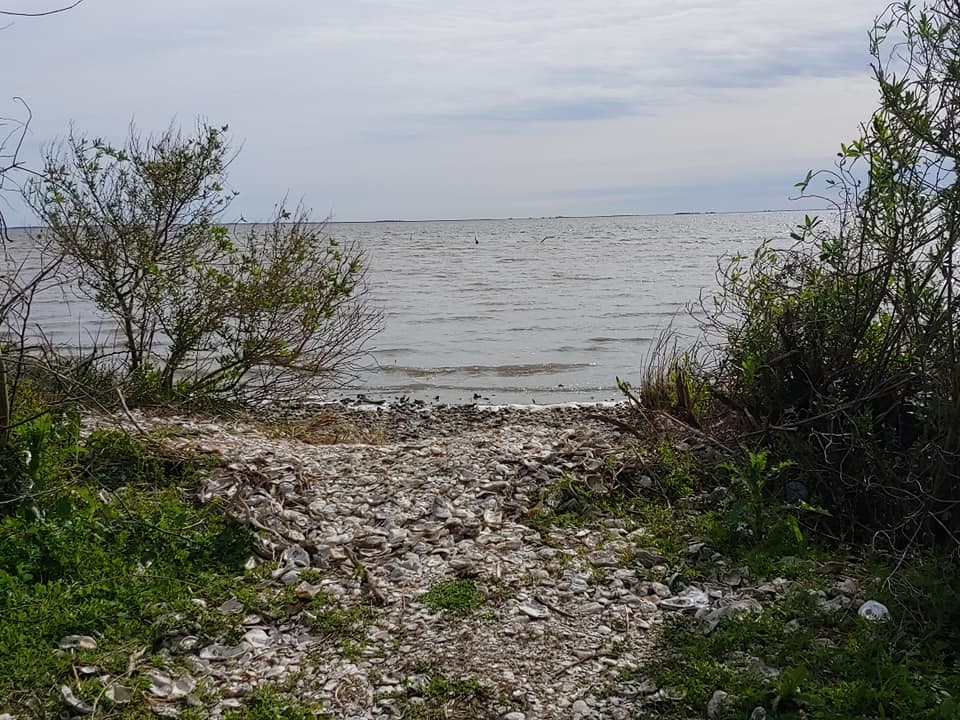
The Sabine National Wildlife Refuge’s Blue Goose Trail is on the left-hand (east) side of LA27W, 7.5 miles south of Hackberry. There is an accessible observation tower overlooking a grit site. There is also Hackberry and other scrub trees to the edge of Lake Calcasieu. Just south of Blue Goose Trail, stop to peruse the grove of live oak (Quercus Virginiana) trees. This grove often holds neotropical migrant songbirds during spring and fall, as well as other birds of interest during the winter and summer months. One or two Merlin always commandeer this grove into their own winter headquarters. King and Virginia Rails can be heard calling all around the complex. Waterfowl and wading birds are almost always up in the sky above.
Location:
Blue Goose Trail: 29.890783°, -93.400942°
What to Expect:
Mosquito spray, as well as sunscreen, is recommended. Long sleeve shirts and pants may be preferred at dawn and dusk.
4. Willow Island

Willow Island provides access to an oak grove close to the coast, pasture with scrubby habitat, brackish marsh, and the Gulf Coast. All the same migrant passerines that are listed for Peveto Woods are possible here and there can be large numbers of Indigo Buntings and Blue Grosbeaks. This is also a great location for sparrows such as Chipping, Savannah, White-throated, and Swamp. Many winters there is also a Clay-colored or Harris’s Sparrow mixed in. Along the coast, many terns are possible such as Royal, Caspian, Least, Black, Common, and Forster’s Terns and Black Skimmer, depending on the time of year. American White Pelicans are also commonly seen along the coast. Shorebirds and ducks can also be common. Large flocks of Lesser Scaups, all three scoter species, Long-tailed Duck and many dabbling ducks can be seen. The common coastal shorebird species such as Sanderling, Willet, Black-bellied Plover, and Ruddy Turnstones are regular and species such as Snowy (winter), Piping (winter), and Wilson’s (summer) Plovers can be present. Long-billed Curlews are also regular on this portion of the coast.
Location:
Willow Island: 29.7839°, -93.223°
What to Expect:
Mosquito spray, as well as sunscreen, is recommended. Long sleeve shirts and pants may be preferred at dawn and dusk.
5. Rutherford Beach
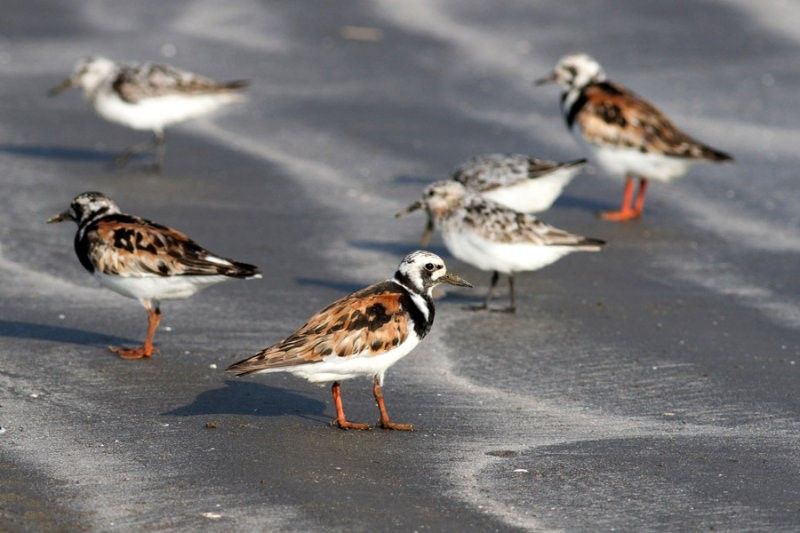
Photo by pbase.com pattonpix
Situated in central Cameron Parish near the mouth of the Mermentau River, Rutherford Beach’s marshes, pools, canals and open gulf areas make it a popular spot for birding south of the communities of Creole and Oak Grove. The freshwater marshes on either side of the entry road to Rutherford Beach are loaded with wading birds, waterfowl, rails, and some seabirds during most months of the year. Once you reach the beach, look for shorebirds and seabirds in all directions. For the more intrepid birders, excellent bird habitat awaits both east and west of Rutherford Beach, though walking will be necessary. To the east of Rutherford Beach lies Hackberry Ridge, an old coastal woodland that stretches eastward for several miles. Look for Caspian and Forster’s terns, as well as roseate spoonbill. During winter, these are joined by common loon, pied-billed grebe, white ibis, Virginia rail and occasionally greater scaup and American bittern. Rare seabirds like California gulls, black-backed gulls, and black-legged kittiwake can be seen in winter, along with a half-dozen species of ducks. The small clumps of “salt-cedar” at the far western end of Rutherford Beach almost always house unusual birds like prairie warbler, western kingbird, and grasshopper sparrow.
Location:
Rutherford Beach: 29.760051°, -93.124192°
What to Expect:
Lots of wide-open space. Mosquito spray and sunscreen are recommended.
6. Pintail Wildlife Drive on Cameron Prairie National Wildlife Refuge

Photo by Chad Moreno, Killer Photography
Just north of the Intracoastal Water on LA27E, you will enter the Cameron Prairie National Wildlife Refuge. About 0.25 miles past the bridge, notice a turn-off onto Pintail Wildlife Drive on the right (east) side of LA27E. This is a popular 3-mile wildlife-watching loop through the marsh and associated woodland ridge. Among other birds, the beautiful Vermilion Flycatcher is often encountered here during the winter months. A short distance further (1.8 miles) north on LA27E, follow the sign to the Cameron Prairie National Wildlife Refuge headquarters on the left (west) side of the road.
Location:
Pintail Wildlife Drive, Cameron Prairie NWR: 29.946369°, -93.084462°
Headquarters, Cameron Prairie NWR: 29.973628°, -93.089069°
What to Expect:
Pintail Wildlife Drive features an accessible half-mile over marsh boardwalk in addition to a 3-mile driving loop. Please note that the driving loop is one way only. The roadway is generally wide enough to pull to the side for others to pass if you want to stay in a spot longer. There is also a photo blind at Pintail Wildlife Drive that may be used on a first come first serve basis.
Restrooms/washrooms, as well as interpretive exhibits, literature, and assistance, are available at refuge headquarters. There are two over water boardwalks at refuge headquarters.
Mosquito spray, as well as sunscreen, is recommended. Long sleeve shirts and pants may be preferred at dawn and dusk.
7. LA: Cameron Par.; Lighthouse Rd. (ie. Sabine Pass Lighthouse)
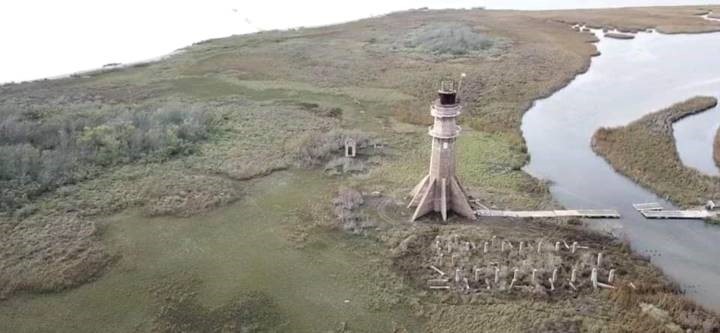
The Sabine Pass Lighthouse was lit in 1856 and has endured many hurricanes and a Civil War Battle. The structure was abandoned in 1952 and has since fallen in d
At the end of an unimproved road lies the 1856 Sabine Pass Lighthouse, a small patch of trees, and the mouth of Lighthouse Bayou.
Flora of the area is mostly salt marsh varieties; however, some upland species are present where dredged material from the Sabine Ship Channel was placed decades to around a century ago. The small patch of woods consists mainly of Hackberry (Sugarberry). However, Toothache (Hercules' club), Yaupon Holly, Wax Myrtle, and Hawthorne are also present. Recently Live Oak and Red Mulberry saplings were also planted. Lower growth consists mainly of brambles, maypop, prickly pear, various grasses, and wildflowers.
The artificial ridge attracts migratory and non-migratory birds alike. Many colorful neo-tropical songbirds grace the site in the spring and fall. The threatened Black Rail has also been noted in the tall grasses. Along the bayou and cove area, mudflats are exposed at low tide and large flocks of wading birds sometimes gather. Various waterfowl including the colorful rosette spoonbill, work the bayou banks and sometimes roost in the trees near the lighthouse. Over 250 species of birds have been observed around the site.
Other fauna includes numerous butterfly species, alligator, bobcats, rabbits, coyotes, deer, and feral pigs.
Location:
Lighthouse Road: 29.717191°, -93.850099°
What to Expect:
The road to the lighthouse runs through company and private lands. Check-in at the Johnson Bayou Library located at 4586 Gulf Beach Hwy, Cameron, LA 70631 (hours: Mon-Thurs, 9am-5pm; Fri, 8am-4pm; Sat, 9am-2pm; Sun, closed) to gain access. The dirt road is quite primitive, and you should travel slowly and with care. Great care should also be used in crossing the floating bridge to the lighthouse. The Sabine Pass Lighthouse may only be viewed from the exterior. Please do not try to enter the structure which is in the process of being restored. Mosquito spray as well as long sleeve shirts and pants, and closed-toed shoes, are recommended.
8. Rockefeller Wildlife Refuge
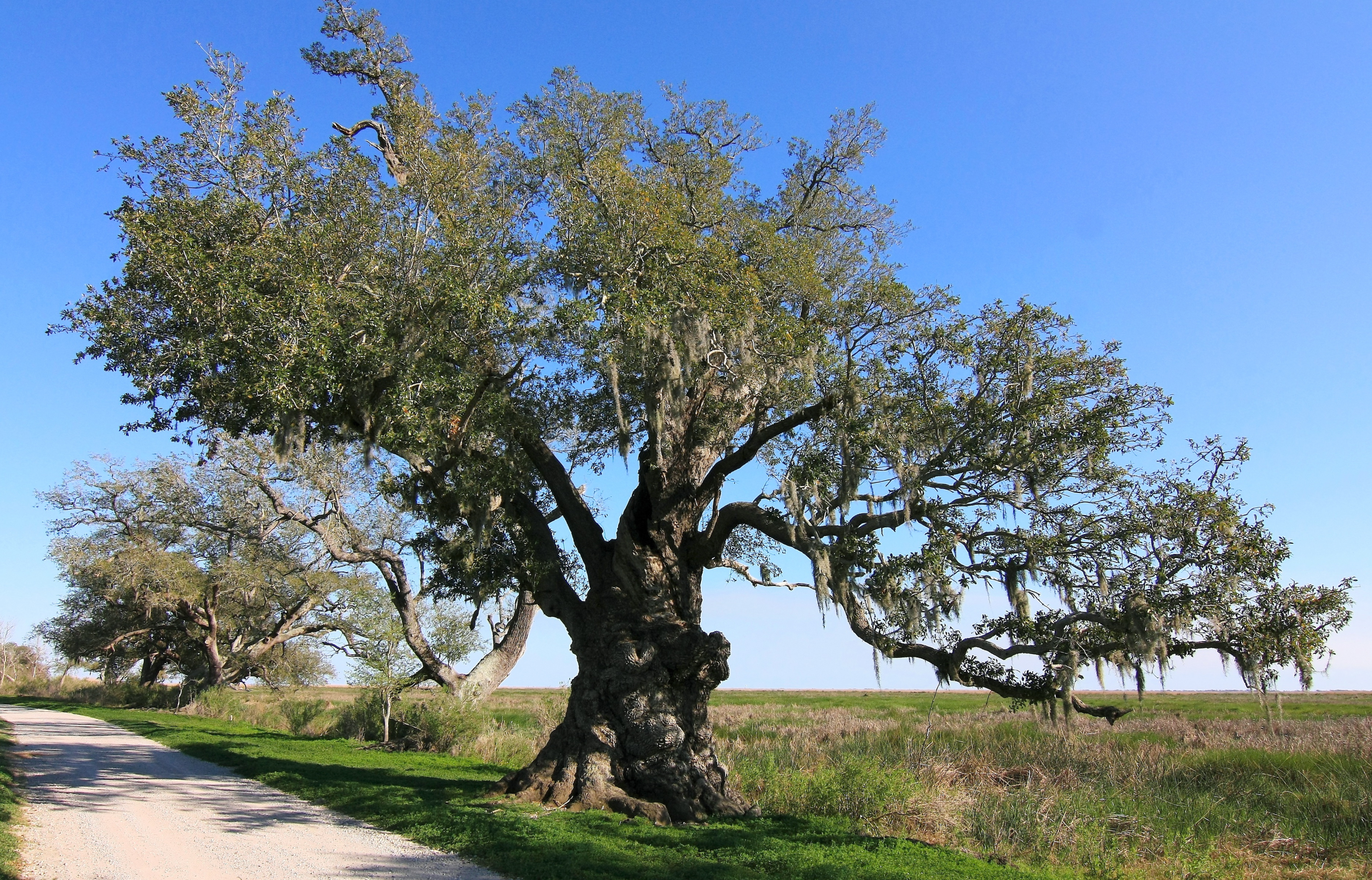
Extensive brackish marshlands, pools and coastal woodlands create an ideal environment for as many as 160,000 waterfowl at this 71,500-acre refuge in Southwest Louisiana that borders the Gulf of Mexico for 26 miles. Take the three-mile Price Lake Road Nature Drive for spectacular views of wading birds, shorebirds and other species from the road, or get your own birds-eye view from the observation tower. From here, bird watchers can also access the private Nunez Woods area featuring an intact chenier habitat with live oaks, hackberries, palmettos, and deciduous hollies. To access Nunez Woods, visitors must stop in at the Refuge headquarters to pick up a key for entrance gate. The headquarters is open Monday-Friday 7am-5:30 pm (except for state declared holidays). Public access is restricted from this property during deer hunting season (September 1 – February 1).
What to Expect:
Mosquito spray, as well as sunscreen, is recommended. Long sleeve shirts and pants may be preferred at dawn and dusk.
9. Fabacher Road

Photo by Vicki Sensat
Along its 6 miles, Fabacher Road winds through unmarred habitat that is predominately remnants of coastal tallgrass prairie, occasionally dotted with shrubs like marsh elder, groundsel, and wax myrtle, furnishing a perfect home for Northern Bobwhite, Dickcissel, and Blue Grosbeak. From late July through the winter, flycatchers make substantial use of the hedgerows, prairie shrubs, and utility lines. In August and September, loom for Eastern Wood-Pewee; Least, Alder, Ash-throated, and Scissor-tailed flycatchers; and Eastern and Western Kingbird.
During the winter months, this area is nearly unparalleled for its sparrows and raptors. At this time, Chipping, Field, Savannah, Song, Swamp, White-throated, and White-crowned sparrows are all abundant. During migration, additional sparrow species such as Clay-colored, Vesper, Lark, Grasshopper, Fox, Lincoln’s, and Harris’s sparrows often turn up. Eastern, Western, and Fuertes’ of Red-tailed Hawks are common here between September and March. Check the horizons, power lines, and shrub tops for rare species such as Swainson’s and Ferruginous hawks.
Fabacher Road’s main claim to fame, however, is the secret that it is one of Louisiana’s two known Crested Caracara breeding sites. Remember that the caracara site, as well as all lands along Fabacher Road, are private property, so do not trespass. Fortunately, the birds can often be seen from the road.
Directions:
From the intersection of LA 27 (Exit 20) and I 10 in Sulphur, go south on LA 27W for 5.3 miles to LA 108. Turn right (west) and go 8.1 miles to Fabacher Road. Take a right (north) onto Fabacher Road, driving slowly for the next 2 miles.
10. Sam Houston Jones State Park

Tree-filled lagoons, a mixed pine-hardwood forest, cypress-tupelo swamps and open river waters all combine to create a unique natural habitat for many species of birds, including resident anhinga, red-shouldered hawk, barred owl, pileated woodpecker, tufted titmouse, Carolina wren, eastern bluebird, and American crow. In fall and winter, migrants such as osprey, sharp-shinned hawk, yellow-bellied sapsucker, eastern phoebe, golden-crowned, and ruby-crowned kinglets and yellow-rumped warblers join the mix. The park is just north of the most active birding region in Louisiana, with nearly 200 species within a 30-mile radius during certain times of the year.
11. Little Chenier Road

Photo by Craig H. Crawford, DDS
Little Chenier Road is one of the most scenic drives in Louisiana’s entire coastal zone, traversing extensive
freshwater marshes dotted with prairie and coastal woodland. During migration, various neotropical songbirds occupy the live oak-dominated woodlands on the higher ridges.
The freshwater marshes along Little Chenier Road hold native aquatic plants such as salt marsh-mallow, American lotus, swamp lily, pickerel-weed, duck-potato, and two or more species of iris. During summer, Purple Gallinule and Common Moorhen commonly nest here.
From late November through mid-February, waterfowl thickly populate these marshes. Look for Gadwall, American Wigeon, Mallard, Mottled Duck, Blue-winged Teal, Green-winged Teal, Northern Shoveler, Ring-necked Duck, Lesser Scaup, and Ruddy Duck. Less common species include Canvasback, Redhead, and Greater Scaup, as well as Cinnamon Teal on a rare occasion. These marshes may also be the only locale in Louisiana where the Fulvous Whistling-Duck exists almost completely year-round.
Location:
Little Chenier Road: 29.86057°, 93.08790°
Creole Nature Trail Brochures
Download a Creole Nature Trail Brochure and learn about the trail, explore a map, and find…
Maps & Apps
To help plan your trip and make the most of your visit, download the free Creole Nature Trail…





